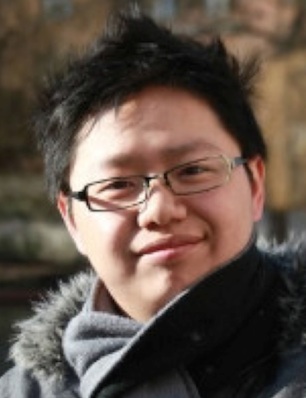Cambridge 7th to 9th September

Presenting Author:
Lifeng Chen
article posted 17 June 2015
Lifeng Chen
Lifeng Chen, currently a PhD student in Photonics Group, Faculty of Engineering, University of Bristol. Interested area is high index contrast 3D photonic crystal with full photonic band gap working at 1550nm wavelength. His expertise includes building up a characterisation setup including spectroscopy and confocal microscopy systems, and use of two photon polymerisation lithography technique to write arbitrary structures on various surfaces.

Lifeng Chen1*, Xu Zheng1, Mike P. C. Taverne1, Y.-L. Daniel Ho1, Chung-Che Huang2, Daniel W. Hewak2 and John G. Rarity1
Rod connected diamond (RCD) [1], which is known to exhibit the largest full PBGs among all designs [2] with the same index contrast, has been investigated but remains a significant challenge to create [3]. Here, we use Direct Laser Writing [4] (DLW) method to fabricate polymeric (n = 1.52) RCD templates and characterize its band structure via an angular-resolved spectroscopy. High refractive index photoresist and/or materials will be identified. Here, we intend to begin with chalcogenide (n = 2.4:1) backfilling via chemical vapor deposition technique [5] to realize the full photonic bandgap photonic crystals.
 Fig. 1a shows the dimension of polymeric template, where the lattice constant a = 1.25 µm, 11 periods in plane, and 6 periods in vertical.
Fig. 1a shows the dimension of polymeric template, where the lattice constant a = 1.25 µm, 11 periods in plane, and 6 periods in vertical.
Fig. 1c shows templates backfilled with chalcogenide material
Fig 1d shows a FIB cross-section of structures backfilling using CVD deposition of Ge-Sb-S confirms 100% infilling and the conformal nature of the process. (Black area is remaining polymer and gray parts are backfilled chalcogenide material.)
References
[1]C. Chan, S. Datta, K. Ho, and C. Soukoulis, Phys. Rev. B 50, 1988 (1994).
[2]H. Men, K. Y. K. Lee, R. M. Freund, J. Peraire, and S. G. Johnson, 224, 17 (2014).
[3]K. Aoki, S. Iwamoto, and Y. Arakawa, Transparent Opt. Networks, … 4, 106 (2006).
[4]S. Maruo, O. Nakamura, and S. Kawata, Opt. Lett. 22, 132 (1997).
[5]C. C. Huang, C. C. Wu, K. Knight, and D. W. Hewak, J. Non. Cryst. Solids 356, 281 (2010).
